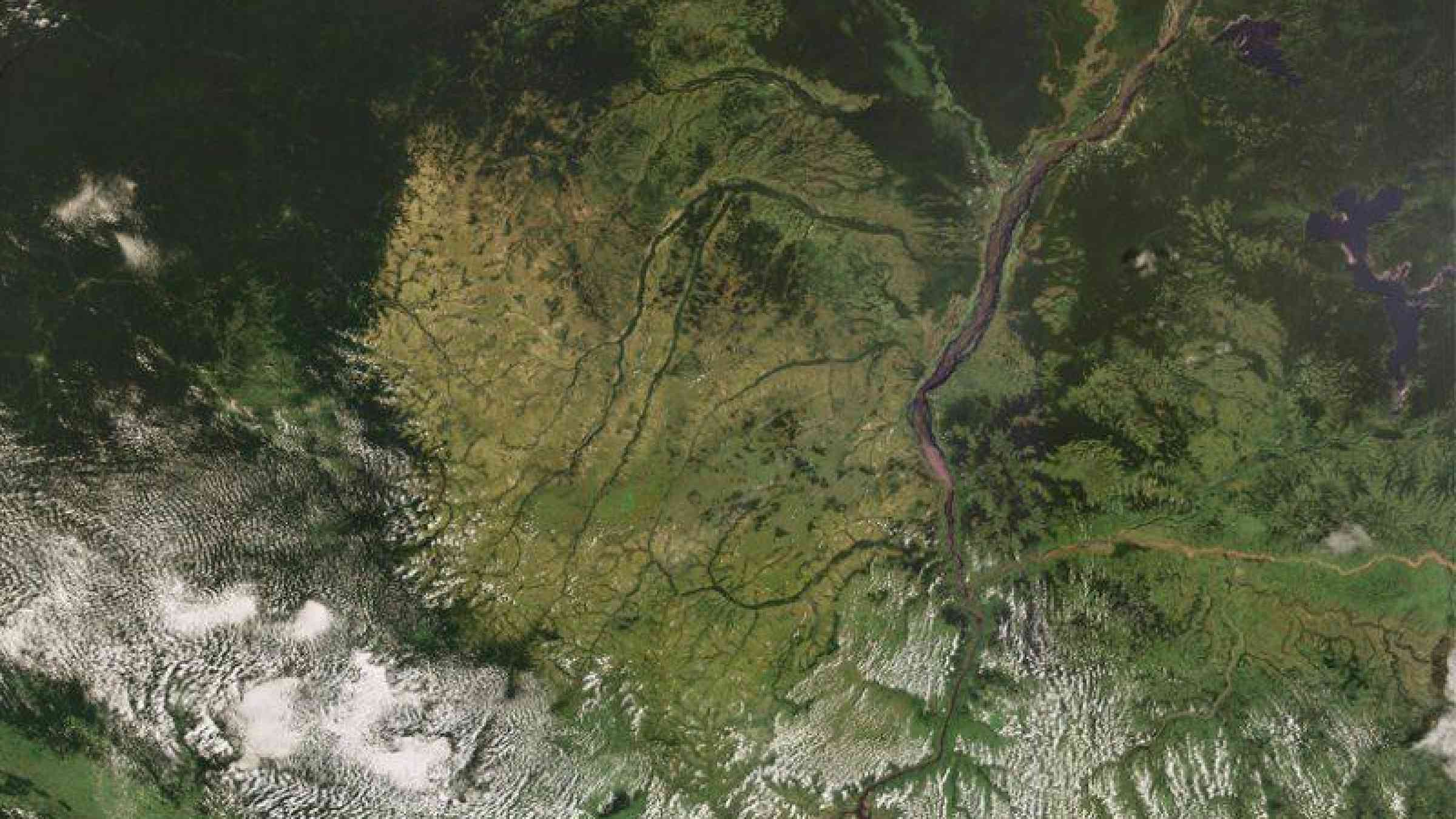Congo rain forest endures a longer dry season

The forest’s dry season has been starting earlier and ending later for decades, making parts of it vulnerable to incursions by drought-resistant ecosystems.
By Kimberly M. S. Cartier
Dry season in the Congo rain forest, the second largest in the world, has been growing longer for the past 25 years, according to a recent study. Across the basin, the dry season has grown by an average of about 6–10 days every decade, and the rate may have sped up in recent years.
“Longer dry season has been observed over the Amazon, and so we thought that there may be similar changes in the Congo,” said Liming Zhou, lead scientist on the project and a professor at the State University of New York (SUNY) in Albany. “However, widespread lengthening [of the] dry season over the entire basin and the increasing rate were surprising to us.”
If the trend continues, the Congo rain forest could rapidly lose ground to drought-resistant ecosystems and transform from a carbon sink to a carbon source.
“Dry season length is one of the most crucial climate limitations for sustaining rain forest,” said lead author Yan Jiang, a graduate student at SUNY Albany.
Drier and drier each year
“Tropical forests are global epicenters of biodiversity, carbon sinks, and important modulators of climate change,” Zhou told Eos. The Congo rain forest covers about 2 million square kilometers within the Congo Basin and spans from central Africa’s western coast to the eastern borders of the Democratic Republic of the Congo. It is the world’s second-largest tropical rain forest, after the Amazon.
“Despite its important role in biodiversity, hydrology, and carbon cycle, the Congo rain forest is largely understudied,” Zhou said. “In contrast to the well-studied Amazon, relatively few studies have considered the Congo Basin.”
Tropical rain forests go through a seasonal cycle of wet and dry periods. Photosynthesis is usually limited during the wet season because it’s always cloudy, so the dry season is crucial for plant growth and forest health. Too long a dry season, however, can cause the rain forest to dry out and give way to ecosystems better suited for hot and dry conditions.
The researchers gathered “satellite-gauge combined precipitation and satellite-derived vegetation data sets” for 1979–2015 in a grid across the basin, Jiang explained. They “identified the boreal summer dry season onset and end over the Congo Basin using these daily and 5-day precipitation and vegetation data sets for each year.” Finally, they calculated the total dry season length each year and how it changed over time for each grid block.

From 1988 to 2013, the dry season lengthened by about 6–10 days per decade, the researchers found. A few areas in the central, southern, and northern basin experienced dry season growth up to 30 days per decade.
“We found that the summer dry season is beginning earlier due to long-term droughts in the pre-dry season between April and June and ending later due to insufficiently replenished soil moisture, which postpones the start of the next wet season,” Zhou said.
The trend may have worsened between 2007 and 2015, the team found. Some of the data suggest that the dry season extended at a rate of about 24–40 days per decade in the northern, southern, and eastern Congo Basin. These results were published earlier this month in Nature Climate Change.
Congo rain forest’s uncertain future
These results bring “much needed attention to climate changes in Congo Basin,” according to Rong Fu, a climate change hydrologist at the University of California, Los Angeles, who was not involved with this study. She added that “the rapid increase of dry season length reported in this paper raises serious concerns on the health of Congo rain forests [and] associated ecosystems.” This work also “raises a suite of intriguing questions” about the similarities between the Congo and Amazon rain forests and their uncertain futures, which will drive future research.
It would be “premature” to attribute the Congo’s lengthening dry season to anthropogenic climate change, Zhou said, or to speculate on the forest’s future outlook. “Tropical forests are mainly constrained by rainfall patterns, but current climate models still have large uncertainties in projecting future rainfall over the Congo Basin,” he said.
Pinning down the natural and human causes for the change will be one focus of the team’s future research.
Jiang explained that irrespective of cause, “if the lengthening dry season continues, the Congolese rain forest…could be substituted by drought-tolerant species such as savannas or woody grasslands favoring drier conditions. On a larger scale, decreased rain forest area due to the lengthening dry season would further accelerate global warming.”